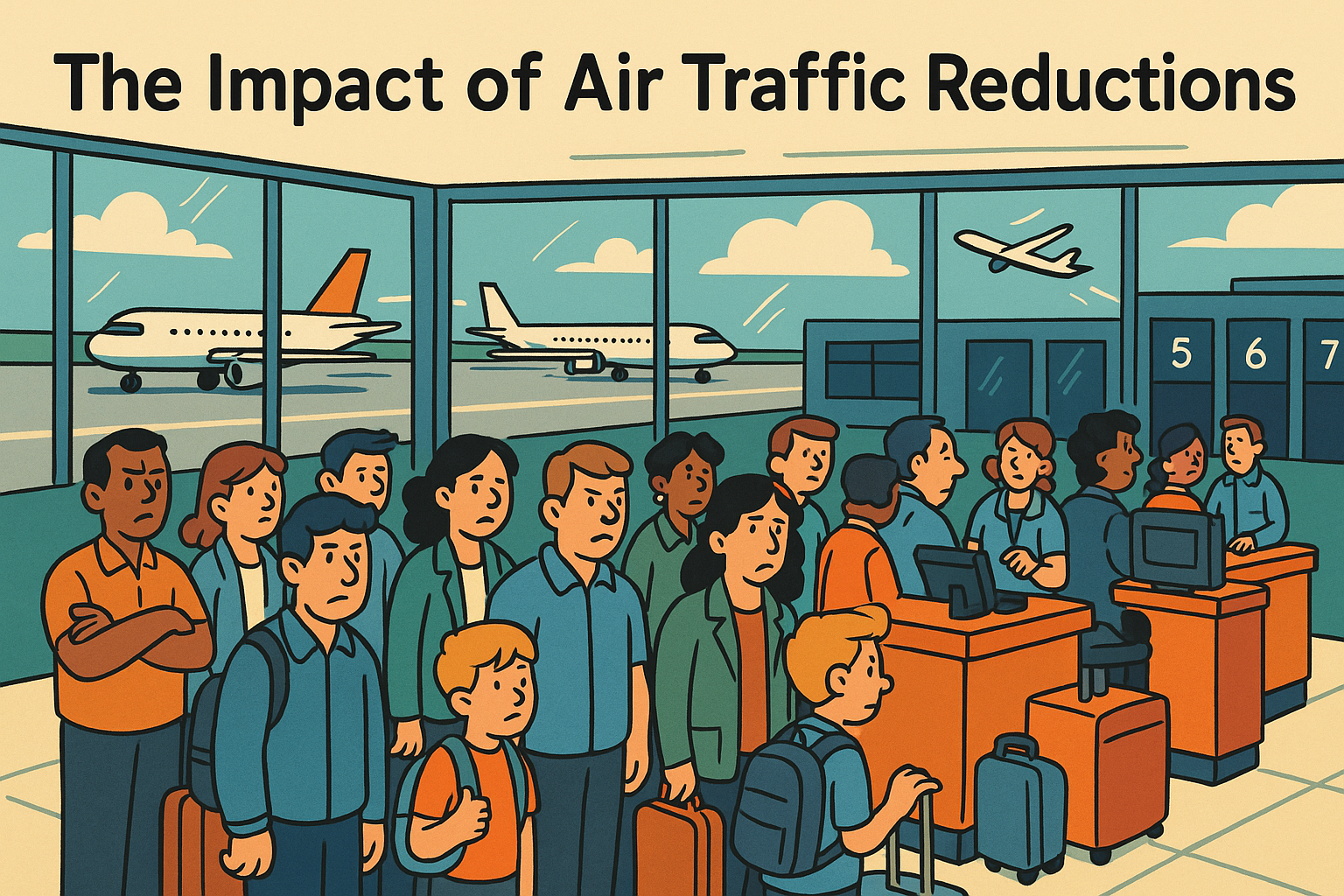When air traffic slows down—whether due to staffing shortages, a government shutdown, or other disruptions—the effects ripple far beyond the runway. From rising ticket prices to job losses across multiple industries, reduced flight operations can quickly reshape the travel landscape and the broader economy.
The Cost of Fewer Flights
Fewer Flights Mean Higher Prices
When air traffic controllers or Federal Aviation Administration (FAA) personnel are limited, airlines often must reduce the number of available flights. Fewer planes in the sky mean less capacity, and basic economics take over: reduced supply with steady demand drives up ticket prices.
Delays and Cancellations Drive Up Traveler Expenses
Operational slowdowns often lead to longer wait times, missed connections, and increased cancellations. Each delay has a cost: passengers may need to book last-minute hotels, purchase new tickets, or lose valuable business time.
Airlines Face Rising Operational Costs
Reduced staffing and flight inefficiencies also hurt airlines directly. When planes sit idle on the tarmac or need to be rerouted, fuel, staffing, and maintenance expenses climb. These higher operational costs often trickle down to consumers in the form of higher airfares and added fees.
A Temporary Dip in Demand — Then a Rebound
Some travelers postpone trips when uncertainty looms—leading to a short-term drop in ticket prices. But this effect is fleeting. Once operations stabilize, pent-up demand often triggers a surge in travel bookings, driving prices even higher than before.
The Ripple Effect on Jobs
Federal Aviation Employees Bear the Brunt
During shutdowns or staffing crises, air traffic controllers, TSA agents, safety inspectors, and FAA employees are often furloughed or forced to work without pay. Beyond financial hardship, these conditions strain morale and create safety concerns in one of the world’s most complex transportation systems.
Private-Sector Workers Feel the Impact Too
Fewer flights mean fewer passengers—and fewer customers for everyone from airport restaurant workers and maintenance crews to baggage handlers and rental car agents. Airlines may cut hours or even lay off staff to offset lost revenue.
Broader Economic Effects Hit Local Communities
Airports are powerful economic engines. When air traffic slows, local businesses—hotels, taxi services, restaurants, and tourist attractions—feel the squeeze. A reduction in both passenger and cargo traffic can drag down regional economies, especially those heavily reliant on tourism or business travel.
Key Takeaways
- Air traffic reductions lead to higher ticket prices due to decreased supply and ongoing demand.
- Operational inefficiencies raise costs for both travelers and airlines.
- Government and private-sector jobs connected to aviation are at risk during shutdowns or staffing shortages.
- Local economies dependent on travel face measurable slowdowns when air traffic drops.
FAQ
Q: Why do flight prices go up when there are fewer flights?
A: Airlines operate fewer routes, creating limited seat availability. With demand unchanged, ticket prices increase to balance supply and demand.
Q: How does a government shutdown affect air travel?
A: It can reduce staffing for critical roles like air traffic control and safety inspection, forcing airlines to cancel or delay flights.
Q: Will flight prices go back down once operations resume?
A: Usually not immediately. After disruptions, airlines face backlogs and high demand, which can keep prices elevated for weeks or months.
Sources
- How Airlines Are Responding Ahead of FAA Flight Reductions Due to Government Shutdown – 9News
- What Fliers Need to Know About Air Traffic Control Amid the Government Shutdown – Condé Nast Traveler
- TSA and Air Traffic Controllers Suddenly Relieved by Unexpected Saviors – TheTravel.com
- How the Government Shutdown Impacts Travel – ABC News
- What to Do if Your Flight Is Delayed or Canceled During the Government Shutdown – PBS NewsHour
- How the FAA Plan to Cut Flights Might Not Be an Utter Nightmare – Wired
- How the Government Shutdown Is Making the Air Traffic Controller Shortage Worse and Leading Flight Delays – The Ohio State University
- How the Government Shutdown Could Affect Travel – WhenInYourState.com
- Impacts of Government Shutdown on General Aviation – EAA.org
- How a Government Shutdown Could Affect Travel – Travel + Leisure

